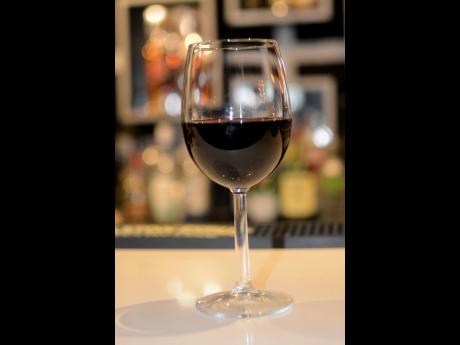Read between the Wines
What’s life without wine? Well, with help from the Oak Wine Bar & Cocktail Lounge you’ll never have to worry about answering that question ever again. While you can get a number of premium spirits from Oak, it’s a premium place to explore the world of wines and learn more about what you want from a vino with help from the learned staff. With its deep plush booths creating natural alcoves perfect for intimacy or bar stools that keep you right in the middle of the action, the Oak Wine Bar & Cocktail Lounge is the perfect place to transport yourself to the days when art deco reigned supreme and the prohibition was nothing but a suggestion.
Now, wines are one of the worlds oldest alcoholic beverages, yet many people outside of the Latin Western European countries – who have unlimited access to affordable vintages of all ages and potencies – still view wines as something classed and outside of their purview. For Food, nothing is off-limits and nothing, especially wine, should be so intimidating you’re too afraid to try different ones! Let us help to make wine a little more accessible for you and yours. To get a better insight into the intricacies of le vin, Food asked the general manager, Bolivier Blake, of the Fromage Group for his expertise.
According to Blake, if you’re a first-time wine drinker, you ought to go for something sweeter since the palate naturally gravitates to things of a sweeter nature. “That’s why desserts do so well,” he joked. For the novice, “We usually suggest something like a Moscato, which is always on the sweeter side.” Moscatos (pronounced, Mos-ka-to), made from the ‘Muscat Blanc’ grape, are white wines most known for, as Blake said, their fruity sweetness. Most notably flavours such as peaches, pears and citrus notes, they “burst in your mouth”. Sweet wines can be had on their own but some you may want to pair with a dessert, yum!
For those of you wanting to dip your toes into a red, Blake suggests a Merlot. “It’s, not too complex so it’s easy to drink.” Merlot (pronounced, Mer-low), also has fruitier notes of cherries and plums – darker fruits than a Moscato if you’ve noticed – and have more ‘body’ than say a Pinot Noir (Pee-no Nwar). Merlots are most often paired with meats such as duck and other white meats rather than the dark meats you’d expect to pair with a red. Think of a Merlot as more of a medium red instead.
“Rosés from France are very dry, whereas Rosés from any other part of the world are mostly sweet or at least semi-dry,” explained Blake. Rosé all day anyone? Talk about the best of both worlds. If you’ve got yourself a Rose from France, it’s likely to come from the South of France. Roses are made by combining the red and white grapes and in a very delicate process, the winemaker ensures the proper colour extraction so we can enjoy the best pinks! Roses are typically paired with seafood and pastas, but we know you’ll just want to pair them with your favourite chocolates.
Champagnes first cousin, Prosecco, made in Italy rather than France, is the sparkling wine you get for your holiday dinners when Champagne is a little too rich for your blood. Don’t worry though, just because it doesn’t come with the same price tag doesn’t mean it’s left taste behind! Proseccos come sweet or ‘Brut’, Extra Dry or simply Dry.
If you’re still unconvinced about wines, daunted by the taste or maybe the price, Blake has some news for you. Just because the wine comes with a big price tag doesn’t mean it’ll be a good fit for you. “If your palate isn’t as developed, you won’t be able to appreciate the more expensive aged wines.” As they’re typically drier than younger wines, Blake and Food caution you from picking based on something like cost. À good middle ground could be a Shiraz, the Zinfandel or maybe a yummy Cabernet Sauvignon. These are some reds you can try, especially for those afraid of reds. They actually pair really well with chocolates of all varieties.






